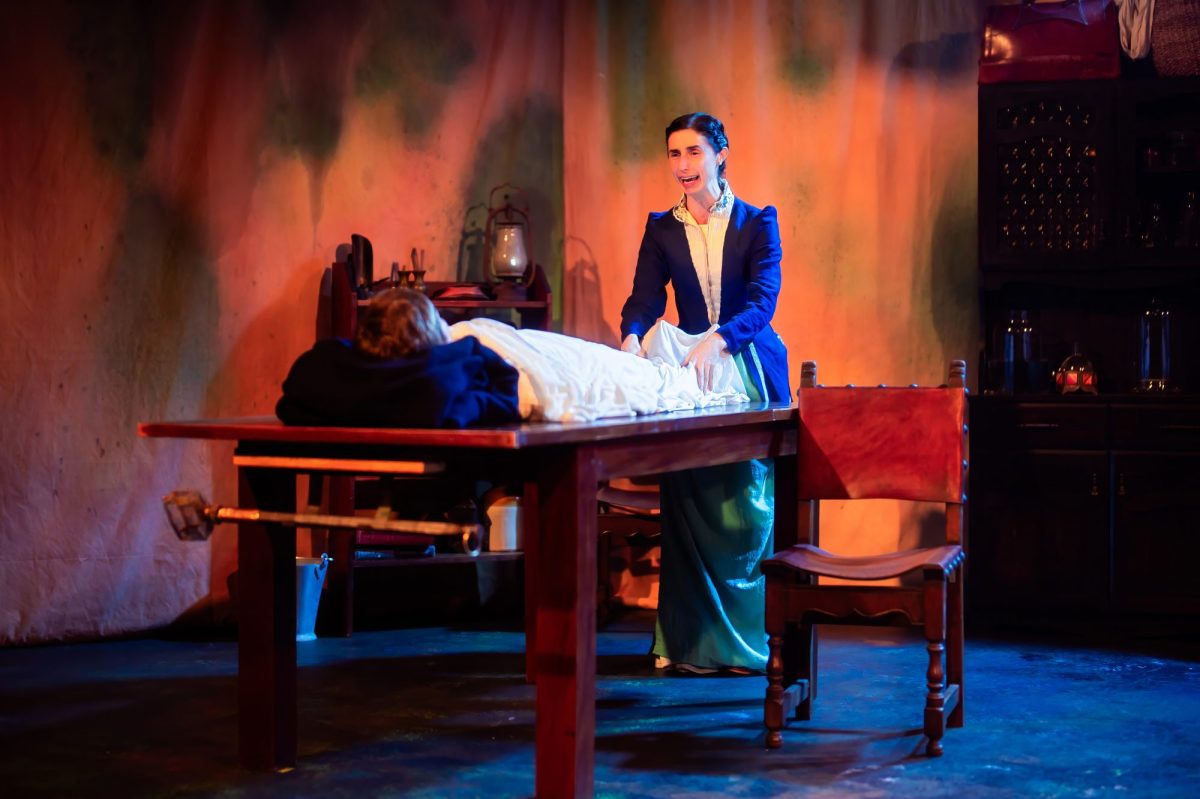Turpentine, a self-described ‘Victorian Gothic five-hander’, is now running at Marrickville’s Flight Path Theatre.
Using the premise of a Gothic tale set in late 19th century London, it concerns a dipsomaniacal doctor known to experiment with reanimation using electricity, a brittle aristocratic woman and her ‘mute’ brother, a very patient ‘dead’ heir and a hapless London cabby.
Set over a single night, the text by English actor Tommy James Green takes us into the basement haunt of Dr Raymond Crow (Green) as seven-year-old Tiberius Milton’s (Charles Griffin) lifeless body is brought in by his mother Cynthia (Megan Elizabeth Kennedy) and her brother Percy (Freddy Hellier) in the hope that Crow, their childhood physician, can bring him back to life.
We descend into Crow’s mad and bad world, which becomes even more complicated when he is visited by his sometimes lover, Madame Moreau (Cris Bocchi), who claims she can communicate with the ‘other side’.
Needing fresh blood and body fat, Moreau brings into the mix a London cabby, Tom Daley (Othniel Mani), and things get tense as the electricity runs.
Turpentine‘s problems lies not with the actors, but with the script, which doesn’t have enough levity for a clichéd exposition, and does not engage the audience into future action or past deeds.
In the first of the two acts there are also problems with the direction by Katherine Hopwood Poulson, which fails to connect, particularly when Crow and Cynthia are on stage together, though this is overcome in the second act.
Whatever failings Green may have as a writer are made up by for his engaging physical approach to his acting throughout the two acts.
While this works well with Cynthia, it really comes alive when he encounters Moreau at her most demanding, and especially in the melee that engulfs the entire cast.
Kennedy is well cast as the brittle aristocrat who is prepared to go to any depths to bring her son back to life, while Hellier’s stoic and largely silent demeanour is a great counterpoint.
In all of this madness Mani extracts some empathy from his role as the cabby, and though his appearance is brief, he also brings a glimmer of humanity into a world gone mad. As Tiberius, Griffin plays a great corpse and at the end gives us one of the few moments of shock with his revelation.
The set for Crow’s subterranean dungeon is well-designed by Alex Baumann and James Shepherd, with its crude electrical instruments and the obligatory London fog ever present as a mark to this production’s Gothic heritage.
For the main, the costumes do illustrate the period and class divisions, though Cynthia’s bustle looks like she sat in a cushion.
Sound by Kyle Stephens suits the action, though could have been ramped up in many places, while the lighting was kept to subdued ambers and whites.
All up, Turpentine is a brave attempt by an independent theatre company that has exposed a strong cast to an appreciative audience.
Turpentine
Flight Path Theatre
Addison Road Community Centre
Director/Intimacy: Katherine Hopwood Poulsen
Playwright/Producer: Tommy James Green
Producer: Miriam Rihani
Set and Costume Design: Alex Baumann, James Shepherd
Lighting and Sound Design: Kyle Stephens
Marketing/Graphics: Othniel Mani
Associate Producer: Isaac Downey
Assistant Director/Stage Manager: Nishka Sumanth
Photographer/Videographer: Jack Aliwood
Sound and Lighting Operator: Oliver Hurt
Cast: Megan Elizabeth Kennedy, Cris Bocchi, Freddy Hellier, Othniel Mani, Tommy James Green, Charles Griffin
Tickets: $38-$48
Turpentine runs until 1 March at Flight Path Theatre, Addison Road Community Centre, 142 Addison Road, Marrickville NSW 2204
